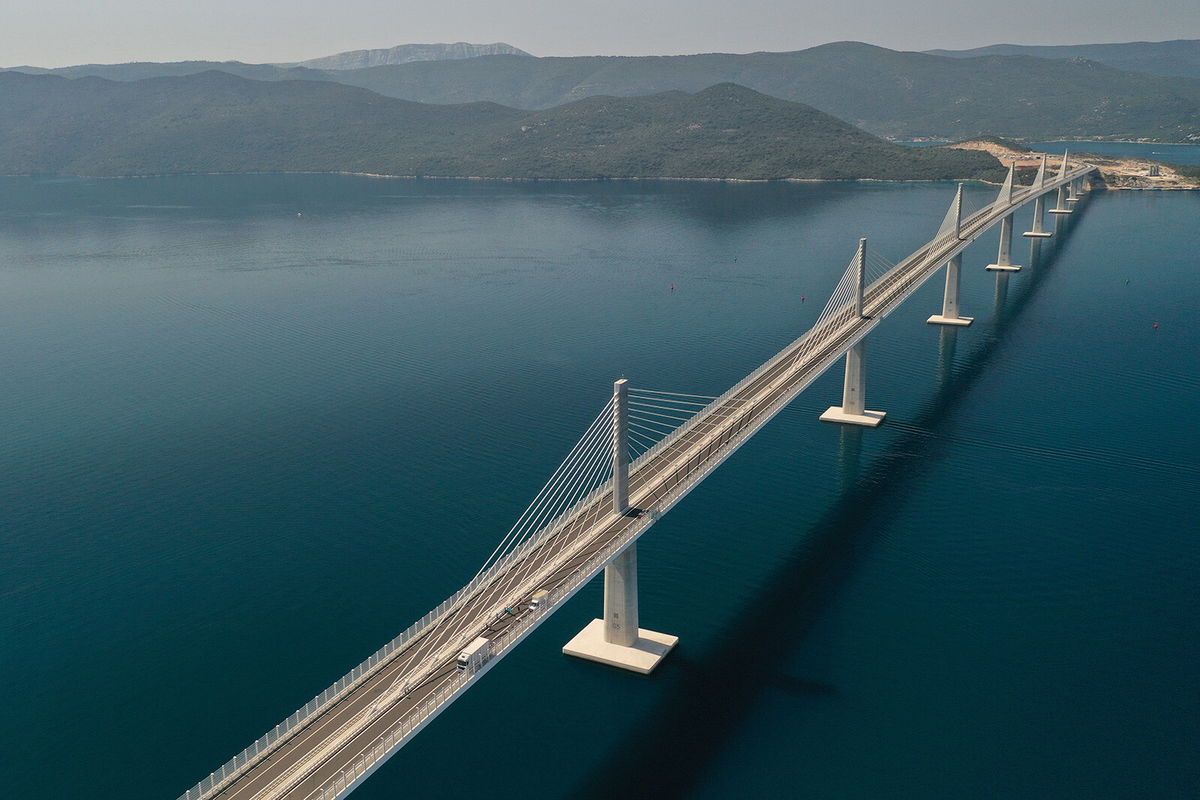New Croatia bridge redraws map of Adriatic coast

The long-awaited Peljesac bridge has just opened in Croatia
Tamara Hardingham-Gill, CNN
Celebrations have been taking place in Croatia to commemorate the opening of a long-awaited bridge that bypasses a narrow strip of Bosnian coastline to connect its southern Adriatic region with the rest of the country.
Co-funded by the European Union, the Pelješac bridge, which formally launched on Tuesday, stretches between Komarna on the mainland and Brijesta on the peninsula of Pelješac, providing easier access to popular tourist spot Dubrovnik.
The launch of the 2.4 kilometer (1.5 mile) cable-stayed structure is being hailed as a historic moment for the country, with hundreds of people turning out to be the first to cross on foot as the bridge opened to pedestrians and then to motorists.
Up until now, both residents and tourists had to cross through Bosnia-Herzegovina when traveling to and from the region of Southern Dalmatia to the mainland, which meant they were subject to border checks, bringing about traffic delays and leaving some of those in the Adriatic region feeling isolated.
Croatia’s Prime Minister Andrej Plenković has described the structure, which cost €525 million ($531 million) to build, as “not a luxury, but a necessity.”
Standing 55 meters above sea level, Pelješac bridge has been in the works for several years, securing a significant €357 million funding contribution from the EU in 2017. It will cut travel time by 37 minutes along the Adriatic coastline, according to the official European Union website.
Borderless access
“The Pelješac bridge will improve the economic development and the territorial cohesion of South Dalmatia and Croatia as a whole,” Elisa Ferreira, EU commissioner for cohesion and reforms, said in a statement.
“This bridge is a symbol of European solidarity and support to Croatia in financial and political terms. It will improve the lives of citizens on the ground and will be part of the development history of Croatia.”
Croatia and Bosnia were once among the six republics that made up the former Yugoslavia.
When Croatia became independent in 1991, two sections of Croatia’s Adriatic Sea coastline were split by a 9-kilometer (5.6 mile) stretch of Bosnian territory known as the Neum corridor.
The China Road and Bridge Corporation won an international tender to construct the bridge in 2018.
The final phase, an 8-kilometer-long (4.9 mile) bypass near the town of Ston, near Dubrovnik, is scheduled for completion in late 2023.
While the opening of Pelješac bridge has many rejoicing, the project has faced criticism over the years.
Bosnian officials initially stated that it would impact the country’s access to the sea, prompting Croatia to increase the height of the bridge, which has four traffic lanes.
The fact that a Chinese state-owned company was awarded the contract to build the structure also raised eyebrows.
Top image credit: Elvis Barukcic/AFP via Getty Images
The-CNN-Wire
™ & © 2022 Cable News Network, Inc., a WarnerMedia Company. All rights reserved.
